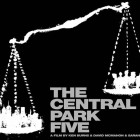
Review: ‘The Central Park Five’
|
An imperfect film reminds Americans of chilling crime and those wrongfully convicted
It’s often said that the more you know about something, the less you are apt to like a film about it. So let me state up front that I was living in New York City (in a single room occupancy hotel not far from Central Park, in fact — I went running in the park almost every day), in 1989, so I remember the Central Park jogger case quite well. In fact, if you lived in the city at the time, it was almost impossible not to hear about the case, including the controversy over the treatment of the young men arrested and later convicted of this crime. The case also received nationwide coverage, as did the fact that someone else later confessed to the crime, and that the Five’s convictions were overturned in 2002. Apparently most Americans don’t know much about this case, however, and they may be better served than I was by The Central Park Five, a new documentary by Ken Burns, Sarah Burns, and David McMahon.


